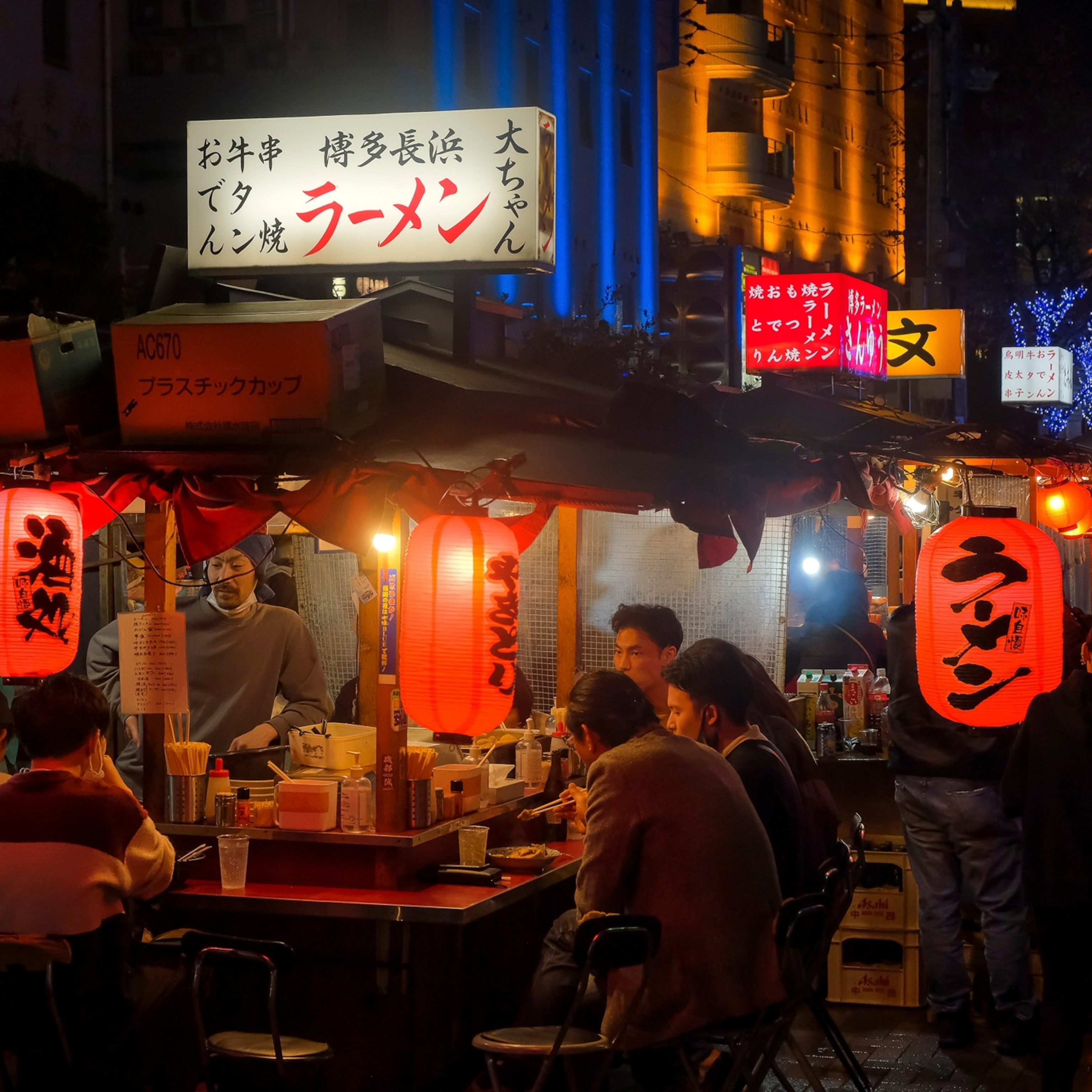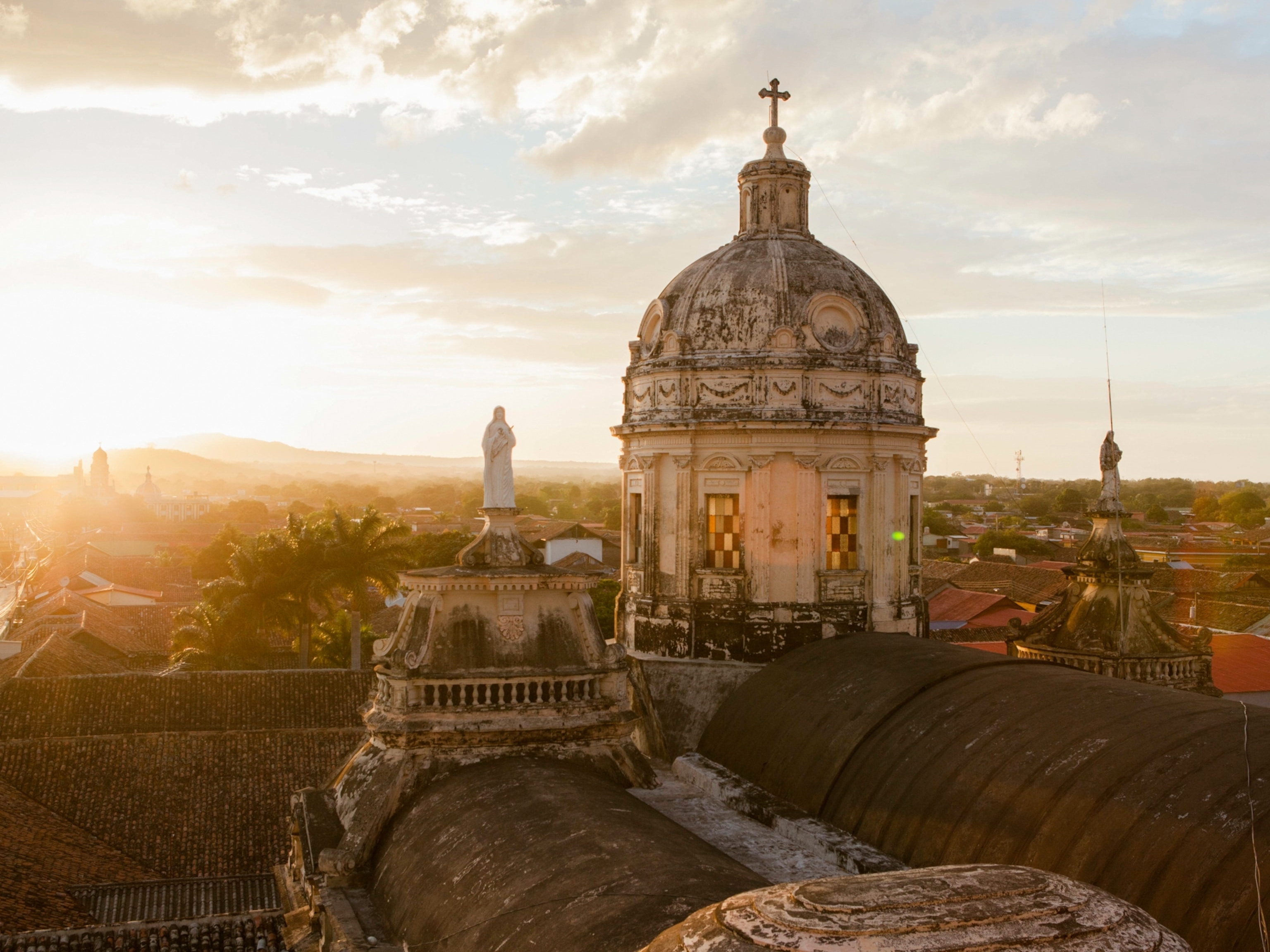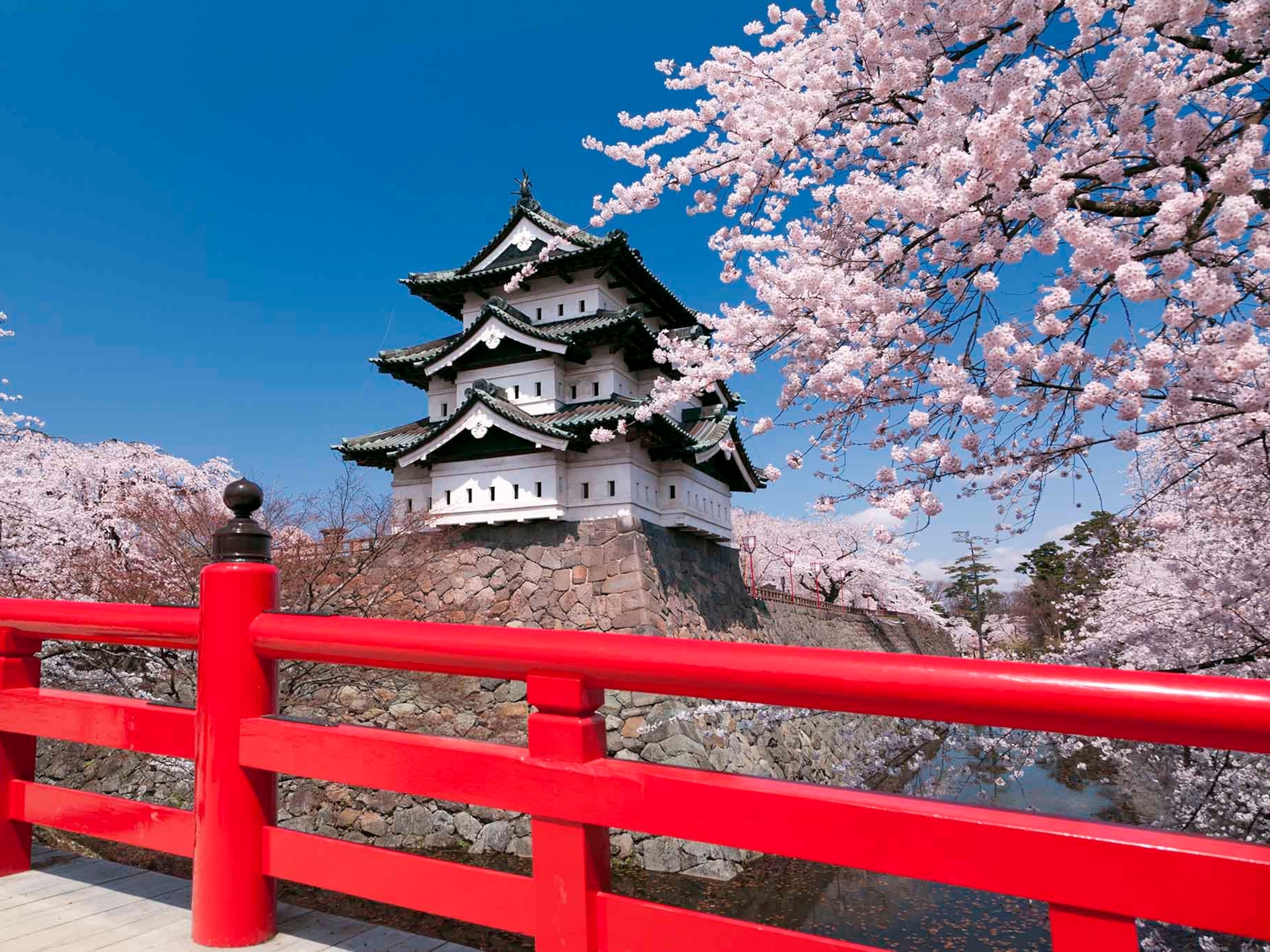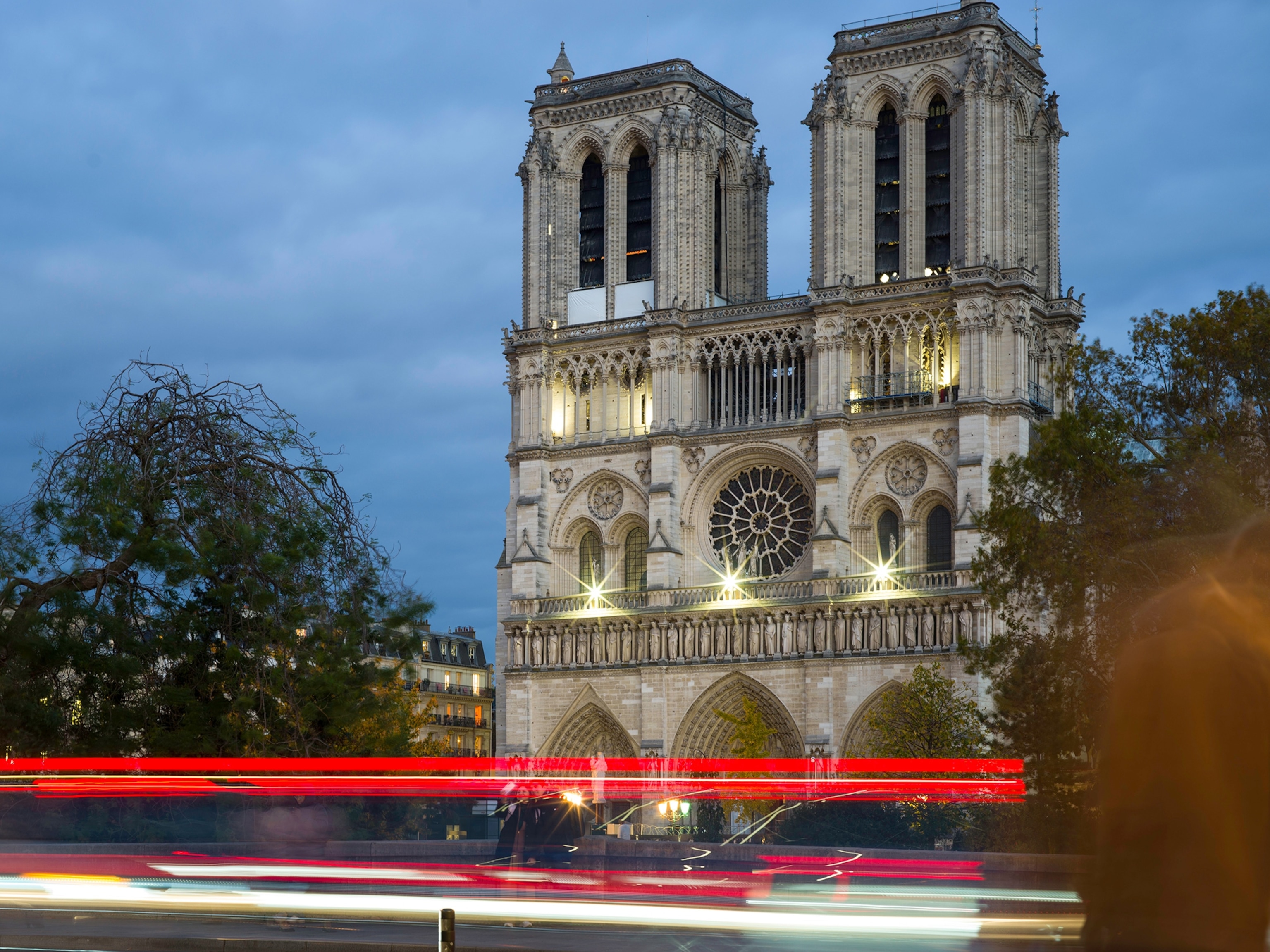
Everything you should know before visiting northern Japan
Tohoku is rebuilding its tourist economy after the 2011 Japanese earthquake and tsunami. Here’s all the info you need to plan your visit—when to go, what to do, where to eat, and how to get around.
Why you should visit Tohoku
Tohoku is Japan’s lesser-known wonderland of nature and culture. Visit the holy mountain shrines of Dewa Sanzan. Find peace in Hirosaki's UNESCO World Heritage temples. Join the crowds at kaleidoscopic festivals. Visit resilient, rural communities along its dramatic coast.
The best time to visit Tohoku
Spring: Tohoku’s springtime is a combination of snow and sakura (cherry blossoms). Skiers and boarders can slalom between snow-covered Maries’ firs on Mount Zao through April. In the same month, marvel at the splendor of cherry blossom trees as they paint the region pink with delicate flowers. From mid-April to May, the Hachimantai Aspite Line opens on Mount Hachimantai. The 17-mile road forms a 26-foot-high ‘snow corridor’ between Iwate and Akita prefectures.
Summer: Hike part of the 620-mile Michinoku Coastal Trail or consider hiking Dewa Sanzan’s three sacred peaks: Mount Haguro, Mount Gassan, and Mount Yudono. Visit the city of Aomori to celebrate the Aomori Nebuta Festival or travel 105 miles southwest of Aomori to Akita for the Akita Kanto Festival. Lantern parades illuminate both cities in August.
Fall: Go leaf-peeping to see some of Japan’s colorful fall foliage found at Lake Towada in Aomori Prefecture from late October to early November. Naruko Gorge in Miyagi Prefecture is another option for the first two weeks of November. The season also brings a bounty of oysters, apples, and fresh soba that tourists can sample in local restaurants and shops across its six prefectures.
Winter: Warm up in Tohoku’s prolific onsen (hot spring) towns, like Ginzan Onsen, considered the most beautiful onsen town in Japan, especially when illuminated in the snow. As the daylight fades earlier, spend an evening visiting lantern-lit izakaya (bars) in Hachinohe’s eight iconic drinking alleys such as Miroku-Yokocho and Tanuki-Koji.
(Related: The essential guide to visiting Chugoku and Shikoku, Japan.)
Tohoku fast facts
Population: 8,318,000
Largest city: Sendai
Size: The third largest of Japan’s eight traditional regions, Tohoku covers 25,850 square miles
Currency: Japanese yen; ¥152 = US $1 (currency converter)
Government: Japan is a constitutional monarchy with a parliamentary government. Emperor Naruhito became head of state in 2019.
Airports: The Sendai Airport in the south and Aomori Airport in the north are the best ways for air travelers can reach Miyagi Prefecture and Aomori Prefecture respectively.
Time zone: Japan Standard Time (UTC+09:00)
Lay of the land
Cities: Cities stipple Tohoku’s six prefectures, offering a variety of places for cultural exploration. Southerly Sendai is the largest city, known for its Shinto Tanabata Festival, where people’s wishes are written on colorful streamers. Sendai is also known for its succulent beef tongue, a must-try, regional delicacy.
Northern Aomori, a cool modern city on Mutsu Bay as well as charming Akita (located on the west coast) are known for their culture. Visit the Akita Museum of Art and the Aomori Museum of Art. See the floats from the Shinto Tanabata Festival at Nebuta Museum WA RASSE in Aomori. For culture vultures, delve into samurai history and traditions in the Hirosaki Samurai District and the Sakura-strewn Hirosaki Castle.
Aomori Prefecture: On Tohoku’s northeast peninsula, Osorezan is one of the most sacred places in Japan. Immerse yourself in the region’s natural beauty at Oirase Gorge, Lake Towada, and UNESCO World Heritage site, Shirakami Sanchi, a mountainous area that includes the last virgin Siebold’s beech forest. On the northeast coast of Japan’s Honshu Island, tourists can visit Hachinohe to explore its alleyway taverns after spending a day along the Tanasashi Coast—just a 30-minute drive away.
Iwate Prefecture: The beautiful Sanriku coast is the site of the tragic 2011 tsunami. Tourists can reflect on the picturesque Kitayamazaki Cape and Jodogahama Beach. For adventurous travelers, consider bat-watching in Ryusendo Cave or exploring natural landmarks such as the Genbikei Gorge on the Iwai River and the Geibikei Gorge on the Satetsu River. Visit must-see temples in Hiraizumi like the Chuson-ji Temple (tucked into a quiet forest) and the cliffside Takkoku-no-Iwaya.
Akita Prefecture: Take a dip in the luminescent blue waters at Dakigaeri Gorge and the mysterious Dragon Eye Lake in Hachimantai. Soak with locals in soothing waters at Nyuto or Tamagawa Onsens. Visit Kakunodate, Tohoku’s ‘Little Kyoto’ to explore a samurai district of black walls and weeping cherries. Cycle along the shores of Lake Tazawa in summer, and hide in the many snow huts built for the Kamakura Festival in Yokote, usually scheduled in mid-February.
(Related: The essential guide to visiting Kyushu, Japan.)
Yamagata Prefecture: Climb to Yamadera, a hilltop temple that provides unbeatable countryside views. Hike the sacred mountains of Dewa Sanzan which includes an elegant wooden pagoda on Mount Haguro. At Tsuruoka, see self-mummified monks at temples like Dainichibou and eat jellyfish ice cream at Kamo Aquarium. Go skiing in the Zao Mountains and relax in the hot springs at Ginzan Onsen located in Obanazawa.
Miyagi Prefecture: Travel along the Sanriku Coast from Miyagi to Ishinomaki, a resilient city that was rebuilt after the tsunami in 2011. Island hoppers can spend day trips on Kinkasan and Tashirojima, also called ‘Cat Island’ because of the several hundred cats who inhabit the island. Experience Matsushima, a picturesque bay of pine-tree-studded islands that inspired Japanese internationally-renowned poet, Matsuo Bashō.
Try delicious sushi at Shiogama-ko in Shiogama or Matsubazushi in Kesennuma. In the summer, visit the mysteriously color-changing crater lake in Okama, and in the fall, enjoy the eye-popping crimson foliage at Naruko Gorge.
Fukushima Prefecture: Visit Aizuwakamatsu’s reconstructed Tsuruga Castle and Sazaedo, a unique double helix Buddhist temple built in 1796. Walk the streets of the preserved Edo-period town, Ouchijuku. Skiers should visit the slopes of Urabandai, and in warmer months, nature lovers should consider hiking Mount Azuma in Oze National Park.
Don’t miss the Goshiki-numa, a cluster of five volcano lakes located at the foot of Mount Bandai. For art, visit the Morohashi Museum of Modern Art to see the Salvador Dalí collection, the third largest in the world, or visit the Fukushima Prefectural Museum of Art, which features 2,000 works including paintings by Shoji Sekine and woodblock prints by Kiyoshi Saito—both local artists.
Taste of Tohoku
Visitors to Japan have visions of steaming ramen bowls, crispy karaage (fried chicken), and juicy gyoza(Japanese dumplings), but don't miss the locally grown produce and traditional specialties that are extremely popular among domestic tourists.
Wanko soba: Wanko soba—Japanese buckwheat noodles—is an Iwate specialty and is also part of a local eating contest. Restaurants continuously bring small portions until you tap out; champions can rack up over 200 bowls. Azumaya in Morioka is the classic soba spot.
Apples: Hirosaki is Japan’s leading producer of the crisp Fuji apple. You’ll find them in everything from desserts to curries, and even onsen. Visit the city’s Kimori Brewery to try local cider.
Kiritanpo: Rice crops in Akita were preserved during the winter by wrapping pounded rice around cedar skewers, a dish known as kiritanpo. These rice skewers are grilled over a fire, flavored with miso, or put into hotpots (stews). Try them at Kiritanpo-ya near Akita Station.
Matsushima oysters: From October to March, Matsushima becomes a hotspot for oysters, which are farmed in its bay. For oyster connoisseurs, try the all-you-can-eat (tabehoudai) oyster menu at one of the many restaurants at the Matsushima Fish Market.
(Related: The essential guide to visiting Hokuriku, Japan.)
Where to stay in Tohoku
Matsushima Sakan Shoan: This 11-room luxury ryokan surrounded by trees has Japanese-style tatami(woven mat) rooms with futon beds, multi-course high-end meals (known as kaiseki), and an onsen. As a traditional inn, Sakan Shoan adds an element of Matsushima heritage to your stay and its suite windows frame the pine island views that made the town famous.
Kakunodate Sanso Wabizakura: This 200-year-old thatched chalet is located in the preserved samurai town of Kakunodate. Guests get to experience history in this relocated house decorated with antique samurai family furniture. Sanso Wabizakura has 10 rooms with private onsens and terraces.
Osawa Onsen Sansuikaku: This onsen hotel in Hanamaki sits on the Toyosawa River and it features an extensive array of baths. This hotel features a 200-year-old Jisuibu Toujiiya and thatch-roofed Kikusuikan, overlooking the river. After relaxing in the onsite hot pools, try the hotel’s dining options before sinking into a traditional futon bed.
Getting around
Plane: With no direct flights from the United States or United Kingdom. to Tohoku, travelers will need to connect to a domestic airline in Japan. From the U.S., JAL, ANA, and Delta are usually the major airlines that fly into Tokyo’s Haneda or Narita International Airport. For direct flights to Tokyo from the U.K., fly British Airways from London Heathrow. From Tokyo, domestic carriers like Japan Airlines, ANA, Fuji Dream, Peach, and Skymark offer flights to airports across Tohoku to other airports such as Sendai and Aomori.
Train: Three high-speed Shinkansen train lines cross Tohoku, which connects the region to Tokyo and beyond. Regional Japan Rail trains that connect to the Shinkansen lines are far-reaching, clean, and timely, and provide scenic views on the way to your destination. Consider a regional or cross-country Japan Rail Pass for extensive train travel.
Car: Travelers should consider renting a car to access out-of-the-way hikes and to view the region’s scenic coastline. Driving is made easy in Japan thanks in part to slow-driving speeds and well-maintained highways.
Bus: You can use a highway bus service to get around, but travel time does cut into your free time to explore. However, local bus systems like Hirosaki’s 100-yen Dotenmachi Loop Bus or Hiraizumi’s 'Run Run' Loop Bus are great for sightseeing in smaller cities and covering larger sites.
Know before you go
Cultural heritage: Largely overlooked by development, Tohoku agriculture is steeped in well-preserved rural traditions that produce fruits and vegetables such as persimmons, peaches, strawberries, carrots, daikon radishes, and cucumbers. The region also produces quality fresh seafood like oysters, scallops, squid, and seaweed as well as award-winning sake from breweries like Hachinohe Shuzo and Senkin Shuzo.
Plan a trip around one of its well-renowned festivals, which keeps Tohoku heritage alive, and learn to make regional crafts such as kokeshi dolls at Shiki no Sato in Tsuchiyu Onsen, and makie lacquerware at Suzuzen Shikki in Aizuwakamatsu.
Visitors aren’t expected to know all of Japan’s customs and etiquette, but in general, be considerate. Littering, loud behavior, public affection, and eating on the go are frowned upon. Remember to bow in interactions such as greeting someone, expressing gratitude, saying goodbye, entering a formal setting, or during a ceremony. Remove your shoes in guesthouses and take a shower before entering an onsen or hot springs, which is usually an all-nude experience.
Language: English-language accessibility is improving but rural areas remain predominantly Japanese only. Translation apps help decipher menus, and it’s always best to learn a few key Japanese words or phrases that will help while traveling in this region.
Tipping: Do not tip! You may be chased down to have your change handed back.
Hours: Similar to the U.S., Tohoku runs relatively early when it comes to lunch, usually eaten between noon and 1 p.m., and dinner, usually eaten between 6 p.m. and 8 p.m.
How to visit the region sustainably
Japan’s new Green Transformation Policy aims to move economic and social structures away from fossil fuels, both domestically and abroad and is a key player in renewable nuclear energy.
Choose less-visited Tohoku to help tackle over-tourism in places like Kyoto. Tohoku is using tourism to aid its recovery from the 2011 earthquake. Tourism helps support local business regrowth. Invest in local economies: eat at local restaurants, buy souvenirs from local shops, and opt for a local guiding company.
Tourism also helps fund national parks and nature protections. Traveling sustainably comes naturally in Japan via transportation (trains); supporting local culture (ryokans, craft experiences, and guides); and eating locally sourced meals using seasonal foods, and ingredients.







